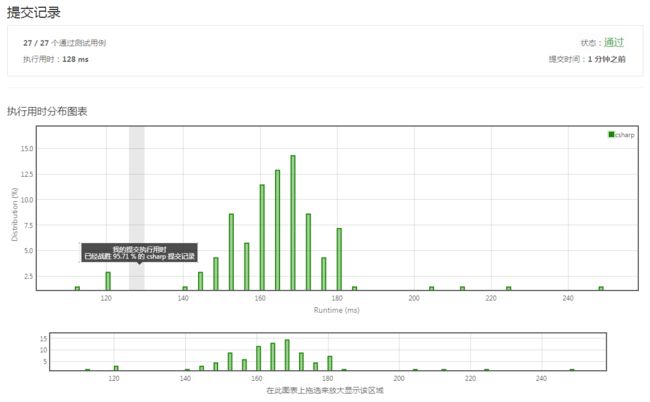LeetCode实战:二叉搜索树的最近公共祖先
背景
- 为什么你要加入一个技术团队?
- 如何加入 LSGO 软件技术团队?
- 我是如何组织“算法刻意练习活动”的?
- 为什么要求团队的学生们写技术Blog
题目英文
Given a binary search tree (BST), find the lowest common ancestor (LCA) of two given nodes in the BST.
According to the definition of LCA on Wikipedia: “The lowest common ancestor is defined between two nodes p and q as the lowest node in T that has both p and q as descendants (where we allow a node to be a descendant of itself).”
Given binary search tree: root = [6,2,8,0,4,7,9,null,null,3,5]
Example 1:
Input: root = [6,2,8,0,4,7,9,null,null,3,5], p = 2, q = 8
Output: 6
Explanation: The LCA of nodes 2 and 8 is 6.
Example 2:
Input: root = [6,2,8,0,4,7,9,null,null,3,5], p = 2, q = 4
Output: 2
Explanation: The LCA of nodes 2 and 4 is 2, since a node can be a descendant of itself according to the LCA definition.
Note:
- All of the nodes’ values will be unique.
- p and q are different and both values will exist in the BST.
题目中文
给定一个二叉搜索树, 找到该树中两个指定节点的最近公共祖先。
百度百科中最近公共祖先的定义为:“对于有根树 T 的两个结点 p、q,最近公共祖先表示为一个结点 x,满足 x 是 p、q 的祖先且 x 的深度尽可能大(一个节点也可以是它自己的祖先)。”
例如,给定如下二叉搜索树: root = [6,2,8,0,4,7,9,null,null,3,5]
示例 1:
输入: root = [6,2,8,0,4,7,9,null,null,3,5], p = 2, q = 8
输出: 6
解释: 节点 2 和节点 8 的最近公共祖先是 6。
示例 2:
输入: root = [6,2,8,0,4,7,9,null,null,3,5], p = 2, q = 4
输出: 2
解释: 节点 2 和节点 4 的最近公共祖先是 2, 因为根据定义最近公共祖先节点可以为节点本身。
说明:
- 所有节点的值都是唯一的。
- p、q 为不同节点且均存在于给定的二叉搜索树中。
算法实现
/**
* Definition for a binary tree node.
* public class TreeNode {
* public int val;
* public TreeNode left;
* public TreeNode right;
* public TreeNode(int x) { val = x; }
* }
*/
public class Solution
{
public TreeNode LowestCommonAncestor(TreeNode root, TreeNode p, TreeNode q)
{
if (root.val == p.val || root.val == q.val)
return root;
if (root.val > p.val && root.val < q.val)
return root;
if (root.val < p.val && root.val > q.val)
return root;
if (root.val < p.val && root.val < q.val)
{
return LowestCommonAncestor(root.right, p, q);
}
return LowestCommonAncestor(root.left, p, q);
}
}
实验结果
- 状态:通过
- 27 / 27 个通过测试用例
- 执行用时: 128 ms, 在所有 C# 提交中击败了 95.71% 的用户
- 内存消耗: 30.8 MB, 在所有 C# 提交中击败了 7.69% 的用户
相关图文
1. “数组”类算法
- LeetCode实战:三数之和
- LeetCode实战:最接近的三数之和
- LeetCode实战:求众数
- LeetCode实战:缺失的第一个正数
- LeetCode实战:快乐数
- LeetCode实战:寻找两个有序数组的中位数
- LeetCode实战:盛最多水的容器
- LeetCode实战:删除排序数组中的重复项
- LeetCode实战:搜索旋转排序数组
- LeetCode实战:螺旋矩阵
- LeetCode实战:螺旋矩阵 II
- LeetCode实战:买卖股票的最佳时机
- LeetCode实战:买卖股票的最佳时机 II
2. “链表”类算法
- LeetCode实战:两数相加
- LeetCode实战:删除链表的倒数第N个节点
- LeetCode实战:两两交换链表中的节点
- LeetCode实战:旋转链表
- LeetCode实战:环形链表
3. “栈”类算法
- LeetCode实战:有效的括号
- LeetCode实战:最长有效括号
- LeetCode实战:逆波兰表达式求值
4. “队列”类算法
- LeetCode实战:设计循环双端队列
- LeetCode实战:滑动窗口最大值
- LeetCode实战:整数反转
- LeetCode实战:字符串转换整数 (atoi)
5. “递归”类算法
- LeetCode实战:爬楼梯
6. “位运算”类算法
- LeetCode实战:格雷编码
7. “字符串”类算法
- LeetCode实战:反转字符串
- LeetCode实战:翻转字符串里的单词
- LeetCode实战:最长公共前缀
- LeetCode实战:字符串相加
- LeetCode实战:字符串相乘
8. “树”类算法
- LeetCode实战:相同的树
- LeetCode实战:对称二叉树
- LeetCode实战:二叉树的最大深度
- LeetCode实战:将有序数组转换为二叉搜索树
9. “哈希”类算法
- LeetCode实战:两数之和
10. “排序”类算法
- LeetCode实战:合并两个有序数组
- LeetCode实战:合并两个有序链表
- LeetCode实战:合并K个排序链表
11. “搜索”类算法
- LeetCode实战:搜索二维矩阵
- LeetCode实战:子集
12. “动态规划”类算法
- LeetCode实战:最长回文子串
- LeetCode实战:最大子序和
- LeetCode实战:不同路径
13. “回溯”类算法
- LeetCode实战:全排列
14. “数值分析”类算法
- LeetCode实战:回文数
- LeetCode实战:x 的平方根

